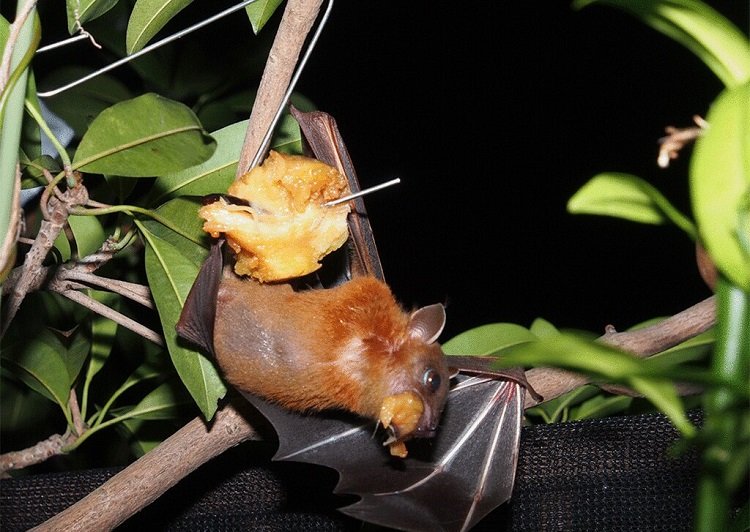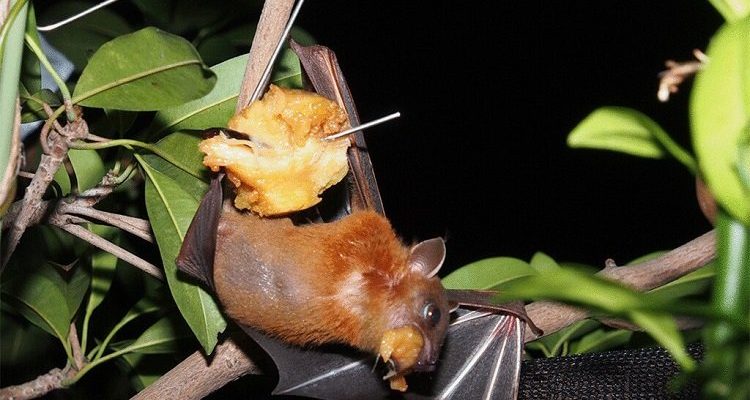
Fruit bats, also known as flying foxes, are primarily found in tropical and subtropical regions. These creatures are the largest bats in the world and come with a unique set of skills that make their diet quite intriguing. So, let’s dive into what these adorable winged mammals eat and how they hunt for their meals.
What Do Fruit Bats Eat?
Fruit bats are mainly *herbivores*, meaning they primarily eat fruit, nectar, and flowers. Their favorite food includes tropical fruits like mangoes, bananas, and figs. You might wonder how these big mammals manage to eat so much fruit when they can’t really do much to harvest it. Well, the answer lies in their ecological role.
These bats use their keen sense of smell and acute vision to locate ripe fruits. As they swoop down and feast on their favorites, they help in pollinating flowers and spreading seeds, making them a crucial part of their environment. It’s like having a natural recycling system, where they munch on fruits and then drop the seeds, allowing new plants to grow. *Isn’t nature amazing?*
The Nutritional Needs of Fruit Bats
Fruit bats need a diet rich in sugars, vitamins, and minerals. This diet helps them maintain their energy levels and supports their large body size. Since they usually eat juicy fruits, they also get plenty of water. In fact, their fruit-rich meals help keep them hydrated, which is perfect for life in warm climates.
But it’s not only about the fruits. When the fruits are out of season, fruit bats can switch things up and also consume nectar from flowers. This diet variation is vital, especially during times when some fruits aren’t available. It’s like having a backup plan—fruit bats are savvy little creatures!
How Do Fruit Bats Hunt for Food?
You might think hunting is limited to predators, but fruit bats have their own unique strategies. Instead of using echolocation like many other bats, fruit bats rely on their excellent vision and sense of smell. This makes them quite different—and that’s what makes them special.
When searching for food, they glide through the tree canopy at night, using their sharp eyesight to spot the brightest fruits. They can even see in color, which helps them distinguish ripe fruits from the unripe ones. Imagine trying to pick the perfect peach at the store, but these bats do it while hanging upside down!
The Role of Social Behavior in Hunting
Interestingly, fruit bats often hunt in groups. When one bat finds a good fruit tree, it’s likely to signal the others by making specific sounds. It’s like they have their own little bat signals to communicate the location of dinner!
Hunting in groups not only makes it easier to find food, but it also offers some safety from predators. By sticking together, they can look out for each others’ safety while enjoying a meal. It’s a nifty blend of teamwork and delicious dining!
The Impact of Fruit Bats on Their Ecosystem
Fruit bats do much more than just eat and fly around; they’re vital to the health of their ecosystems. As they munch on fruits, they help disperse seeds, promoting plant growth and forest regeneration. This means more trees, more fruits, and a healthier environment!
For example, in many tropical regions, fruit bats can be the primary pollinators of certain plants. When they visit flowers to sip nectar, they inadvertently help with the fertilization process. Without these bats, some plants might struggle to reproduce—essentially creating a ripple effect throughout the ecosystem.
Challenges Facing Fruit Bats
Unfortunately, fruit bats face several challenges. Habitat destruction due to urban development and agriculture poses a significant threat to their populations. Additionally, hunting and culling in some regions create further pressures on these amazing creatures.
Here’s the thing: protecting fruit bats is crucial for maintaining biodiversity. As they’re already struggling, learning more about their habits and roles in nature can help spark interest in conservation efforts. By supporting their habitats, we not only keep the bats safe but also ensure a healthy environment for ourselves!
How Long Do Fruit Bats Live?
The lifespan of fruit bats varies significantly depending on the species. On average, they can live anywhere from 10 to 30 years in the wild. However, some species have been known to live even longer, especially in captivity. Their lifespan can be influenced by factors like habitat, diet, and whether they face threats from predators or human activity.
Imagine having a little flying friend around for decades—fruit bats can create long-lasting bonds within their communities, making their social structures fascinating.
Fruit Bats in Culture
You might be surprised to learn that fruit bats play a role in various cultures. In some regions, they’re seen as a symbol of good luck and prosperity, especially because they help in fruit production. On the flip side, they can also be misunderstood due to their appearance.
In myths and stories, they often represent transformation and renewal, much like the fruit trees they help flourish. So, next time you think of bats, remember they’re more than just spooky creatures—they’re quite remarkable!
So, the next time you hear about fruit bats, remember their role in the ecosystem. They’re not just nocturnal flyers; they’re essential for plant regeneration and contribute to biodiversity. From their fruit-based diet to their clever hunting strategies, these creatures are truly fascinating. By understanding and protecting fruit bats, we’re also nurturing the health of our environment.
Isn’t it incredible how interconnected life is? By learning more about these winged wonders, we can help support their survival—and in turn, our planet’s health. Let’s spread the word about the humble fruit bat and celebrate its place in nature!

